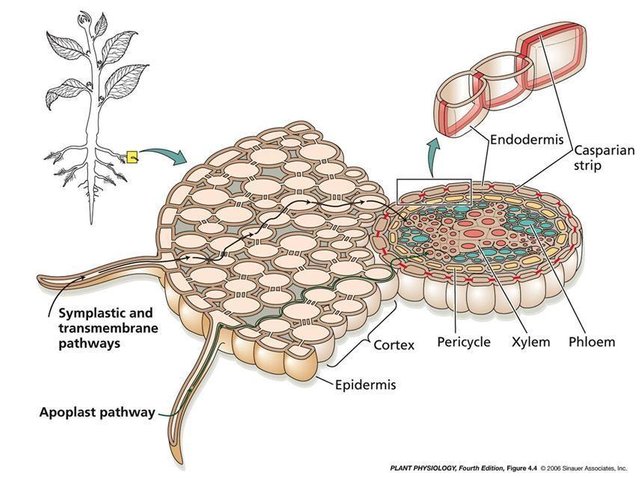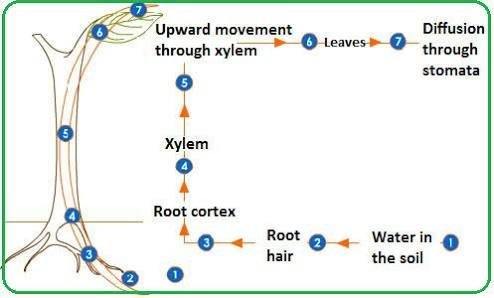How Is Water Transportation on Plants
Hello my all steemians. Good morning all science lover. Hope you always have good days. On this occasion i will share an information about Water Transportation on Plants.
Root Structures
Do you know about the network structure at the root from the outermost to the deepest network? These tissues will be passed by water when entering the plant. See the following figure to find out the network through which water enters the root.

First of all, water is absorbed by the hairs of the roots. Then, water enters the epidermal cells through the osmosis process. Next, water going through the cortex. From the cortex, water then through the endodermis and perisikel. Furthermore, water enters the xylem network that it is on root.
Water rise from roots
After arriving at the root xylem, the water will move to the xylem rod and to the leaf xylem! Plants do not have a fluid pumping mechanism like the human heart. Then, how can water rise from roots to other higher parts of plants? Look at the following figure of the movement of water from root to leaf!

Water can be transported up from the roots to other higher plant parts and circulated throughout the plant body due to the capillarity of the stems. This property is like that contained in the capillary tube. Capillary pipe has a shape that almost resembles a straw but its diameter is very small.
Capillary pipe
If one end of the capillary tube is inserted into the water, the water in the pipe will be higher than the water around the capillary pipe. Similarly, on the stem of the plant, the water in the stem of the plant will be higher when compared with the water located on the ground.
The capillary power of the stem is influenced by the presence of cohesion and adhesion forces. Cohesion is a tendency for a molecule to bind to other similar molecules. Adhesion is the tendency of a molecule to be able to bind with other unlike molecules.
Through the adhesion force, the water molecule forms a weak bond with the vessel wall. Through the force of cohesion there will be a bond between one water molecule with another water molecule. This will lead to attraction between one water molecule and another water molecule along the xylem vessels.
Conclusion
The transpirational water loss allows for uptake of mineral nutrients from the soil. However, much of the water loss that land plants exhibit can be viewed as a "necessary evil." The stomates must open up to allow for photosynthesis to occur, and during the process of letting carbon dioxide into the leaf, water vapor is lost to the atmosphere. When the stomates close to prevent excess water loss, photosynthesis is compromised.
Hi @cammelya!
I'm happy to include this post in the CTR Crossword Puzzle No.-9. This post will be linked in all related CTR Crossword posts . All participants for this puzzle will land on this post to find their answers to it
Thank you for creating awesome content which is just perfect for our participants!
P.S.:
Readers of this post, if they want to participate in this contest, they have a slight edge over others as they have already read this post. All are welcome to participate and have fun.